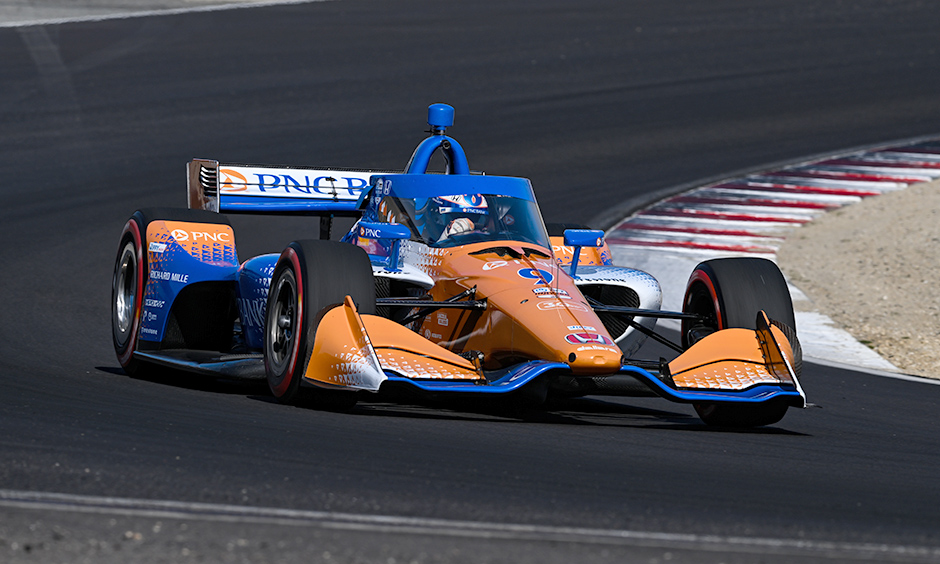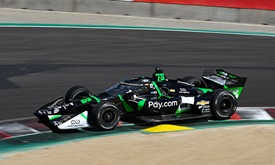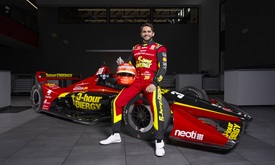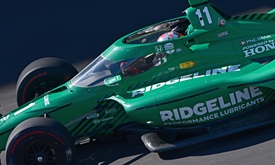New Math: Andretti, Ganassi Find Value in Changing Car Count
FEB 23, 2024
Andretti Global’s car count is downsizing this season, dropping from a four-car NTT INDYCAR SERIES organization to three full-time entries. Chip Ganassi Racing is doing the opposite, expanding from a four-car effort to five.
Marcus Ericsson, Colton Herta and Kyle Kirkwood will drive for Andretti. Marcus Armstrong, Scott Dixon, Linus Lundqvist, Alex Palou and Kyffin Simpson will drive for Ganassi.
Both championship-winning organizations may see through different lenses regarding the changes, but each sees value in the competitive nature of its decisions.
“The biggest thing for us, moving from four to three cars, is trying to concentrate that effort,” Herta said. “It's a full plate. When you're talking about mechanics and engineers, what they have to do when they go do simulator days or some post rig days and wind tunnel days, it's a lot for them.
“So, being able to kind of concentrate on three entries, dialing in the speedway cars when you have one less to worry about, you can spend more time on them. Everybody gets a little more time in the spotlight, for sure, when you dial that back.”
Herta said this move didn’t affect anyone’s job. It’s the same amount of people still involved as last season. It’s just “one less car to deal with.”
Ericsson, the newest member of Andretti Global’s driver lineup, spent the previous four seasons with Chip Ganassi Racing. His first year there, in 2020, he was part of a three-car effort. The final three seasons, it was a four-car team.
“I think it will be an advantage,” Ericsson said of Andretti’s three-car effort. “Slimming down will be good for the organization. We can really focus on getting three great crews on the cars, great group of engineers on each car. It's more people that's focusing on fewer cars, so, in theory, I think that should be better.
“I think there's a reason why the team did it, and I'm hoping that when we get to St. Pete and the season, that's going to pay off.”
This type of move paid dividends for bigger outfits in years past. When Chip Ganassi Racing reduced from four cars in 2017 to a pair for the 2018 season, Scott Dixon took home the championship trophy, improving from one win to three.
Team Penske did the same between 2021 and 2022, slimming from four cars to three and improving from three wins to nine as a result. Team Penske driver Will Power celebrated at WeatherTech Raceway Laguna Seca as the 2022 series champion, too.
Less can lead to more.
On the opposite side of the coin, Chip Ganassi Racing thinks its expansion to five cars is an advantage.
CGR has celebrated success when adding cars to the stable, too. When the team expanded from two cars to four in 2011, Dario Franchitti raced to his third consecutive championship. The team grew from two cars to three cars in 2020, and Dixon hoisted the Astor Challenge Cup championship trophy for the sixth time in his legendary career.
A year later, Ganassi expanded again, jumping from three cars to four. Alex Palou won the first of his two championships.
Does moving from four cars to five lead to a 16th INDYCAR SERIES championship this September?
“I don't believe there's disadvantages apart of headaches that (team owner) Chip (Ganassi) might have apart of putting one more trailer or I don't know how he's going to do it,” Palou said. “But in terms of the team performance, I don't really see it. It might change. It might be a disadvantage. But I don't think so.”
The Spaniard says that from the outside, he can understand fans thinking adding a car is a big change. However, Palou notes Chip Ganassi Racing has at least 180 people at the shop, and strength in numbers helps find good mechanics.
Palou also sees an extra car adding more valuable data to study, even with a pair of rookies in Lundqvist and Simpson and a second-year driver in Armstrong.
“If we can have 20 more laps out of free practice, it just adds on -- I remember Detroit having (Marcus) Armstrong and (Marcus) Ericsson and (Scott) Dixon and myself, we only had like four laps, and if you add one more car, it might be five, and you get so much data for the next day, and you can get a little bit of an advantage,” he said.
The analytical Dixon takes a more measured approach to growth. He said adding or subtracting cars is never easy but added history shows the Ganassi team is capable of delivering race wins and season titles regardless of car count.
“I think my biggest point of view on racing and having done it for a while at any level, it's all about the people,” he said. “There sometimes can be a limit to how many of those people can find or how many people that are compatible.
“I think with different programs and maybe the size of the team maybe not changing so much and having kind of the depth there I think really helps. But you're still adding a lot of moving parts to an already pretty big team.
“Hopefully we can jump in and dive in, and it's going to be no missteps. That's obviously the biggest and best goal that we can have. But we'll see how that plays out.
“Five cars is a lot of people, a lot of moving parts. But I think if there's a team out there that can pull it off, it's definitely this one.”
The 17-race 2024 NTT INDYCAR SERIES season begins with the Firestone Grand Prix of St. Petersburg presented by RP Funding at noon ET Sunday, March 10 on NBC and Peacock.





















